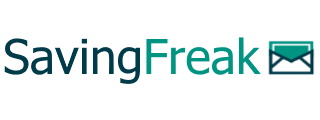Technology has made creating a lazy portfolio more accessible than ever.
With new apps and innovative investment options, you can lazily build your portfolio right from home. But what is the right strategy for you?
We will go through the options to help you be comfortable in forming your lazy portfolio strategy.
Quick Navigation
What is a Lazy Portfolio?
A lazy portfolio is a mix of investments that are mostly hands-off.
 This means that you do the work once and only come back to maintain the portfolio over time. If you are really good or choose the right tools, you can not manage the portfolio for a year or more.
This means that you do the work once and only come back to maintain the portfolio over time. If you are really good or choose the right tools, you can not manage the portfolio for a year or more.
Once the portfolio is set up, you can contribute regularly or check-in from time to time to make sure your strategy is working.
How to Build a Lazy Portfolio
When you create your portfolio, you will need to decide on three areas before making your investments they include:
Involvement
How lazy do you want this portfolio to be? No really.
Some people consider a lazy strategy to be something they need to check in on once a month. Others want once a quarter and still others who want to check once a year.
If you are managing some of the portfolios yourself, you will want to re-balance the investments regulary. Re-balancing will make sure that no one investment becomes too large a part of your portfolio and opens you to more risk.
Knowing how involved you want to be with your portfolio is going to determine the next two decisions.
Assets
What you are investing in matters. If you are going to go all stocks, then you will be committing to be more involved, while mixed assets can be done through investment vehicles.
Bonds are another option that usually locks in for a set amount of time, so you will not have to check them nearly as often.
With whatever mix of assets you go with, make sure that you understand them and are comfortable with how your money is being invested.
Types of Investments
Now that you understand the involvement and the assets, you need to choose a vehicle for investing in your lazy portfolio. Here are some of your main options.
Index Funds
Touted by Warren Buffet as the best way for the average person to invest, index funds follow a specific index of the market.
This could be the S&P 500 or an entire stock market. Index funds give you broad access to hundreds, if not thousands of stocks at one time.
No Load Funds
Any fund you choose should be a no-load fund. Loads are commissions usually paid to the stockbrokers managing the fund and making the trades.
This is one more thing to make sure that your money is going as far as possible when you make your investment.
Real Estate
Real estate may not seem like a lazy way to invest, but there are hands-off investing options that include real estate.
 REITs allow you to invest in real estate without having to own the property personally. Instead, the trust does all the investing, and you gain an excellent interest rate on the money you deposit.
REITs allow you to invest in real estate without having to own the property personally. Instead, the trust does all the investing, and you gain an excellent interest rate on the money you deposit.
Mutual Funds
Tried and true, mutual funds can invest across many different types of investments. They can be a single type of asset class or can be a good mix.
Mutual funds are one of the easiest ways to build a lazy portfolio.
Bonds
Bonds are a way of loaning money for a specific period and earning interest on that loan. There are several different types of bonds, and some even come with tax protection.
Best Brokerages For a Lazy Portfolio
If you are going to manage your portfolio, you want to have a brokerage that makes it as easy as possible and charges you the least. These three options will all do the trick.
Ally Invest
Ally Invest is one of the top brokerages and has no trading fees for stocks and ETFs.
Their tools for doing research are top-notch, and Ally has options to work with an advisor for a low cost.
- No Fees
- Research Tools
- Ally Invest Review
M1 Finance
M1 Finance was one of the first brokerages to offer zero fee investing. Their primary focus is on ETFs, and they make ETF investing easy.
- No Fees
- ETF Focused
- M1 Finance Review
Vanguard
Vanguard is the grandaddy of low cost and lazy investing. They have the lowest costs on their mutual funds of any mutual fund family.
- Top for Mutual Funds
- Super-low cost
- Vanguard Review
Accounts That Invest For You
Instead of doing the investing yourself, several investments will do all the investing for you. They not only do the investing but also maintain the account. The top done-for-you options include:
Betterment
Betterment is one of the top robo-advisors in the country. They determine your risk tolerance and then handle all of the investing from there on out.
Once you sign up with Betterment, it takes less than 10 minutes to finish the setup, and then once a deposit is made, they take it from there.
- Completely done for you solution
- Uses tax avoidance strategy
- Betterment Review
Fundrise
Fundrise is a REIT that allows anyone to get started in real estate investing. Most REITs require a large initial deposit, but you can get started in this investment for only $500.
- Passive real estate investing
- Lowest initial deposit for REIT
- Fundrise Review
WealthSimple
Wealthsimple is the largest robo-advisor in Canada and one of the top options in the United States.
They take a more personal approach than other robo options and have top-notch customer service.
- Top customer service
- Utilizes tax-loss harvesting
- Wealthsimple Review
Sample Portfolios
 To get you thinking about how you want to handle your investing, here are three examples of lazy portfolios:
To get you thinking about how you want to handle your investing, here are three examples of lazy portfolios:
The “No-Brainer”
Dr. William Bernstein was a neurologist who became a well respected financial guru. He is a big fan of index funds, and his most famous portfolio is the “No-Brainer” portfolio.
It consists of four index funds:
- 25% Bonds
- 25% Large-cap US Stocks
- 25% Small-cap US Stocks
- 25% International Stocks
If you are looking for specific funds or ETFs, you could use a mix like this:
- Total Bond Market fund
- S&P 500 Index
- Total Small-Cap Index
- Total International Stock Index
You can make these investments through mutual funds or ETFs.
Two Fund 60/40
Rick Ferri is famous for promoting this portfolio, but it is one of the simplest in that you invest 60% into stocks and 40% into bonds.
Any easy way to do this is with ETFs. Two to look for would be:
- Total World Stocks Fund
- Total Bond Market Fund
ETFs will be the fastest way to get into these funds, but there are many mutual fund options for implementing this lazy portfolio.
Three Fund 60/40
Think of this one like the 60/40 with a slight twist. Instead of doing all-world stocks, Taylor Larimore developed this portfolio so that there was not as much exposure to the ups and downs of the international stock markets.
While it still follows the 60/40 rule, the portfolio invests in these percentages:
- 42% US Stocks
- 18% International Stocks
- 40% Bonds
This can be accomplished with the following funds:
- Total Stock Market Index
- Total International Stock Index
- Total Bond Market Fund
Once again, ETFs will get you started with the least amount down, but a mutual fund strategy can also be used.
Building a Lazy Portfolio Final Thoughts
I am a huge fan of lazy investing and employ it in my long term financial plan.
For my Roth I use a combination of different mutual funds and invest in them each month. For my wife’s Roth we use Betterment as her robo-advisor.
If something were to happen to me, my wife, who is not as interested in investing as I am, can easily manage these portfolios for when she is ready to retire.
No matter which strategy you choose, a lazy portfolio is a great way to

Leave a Reply